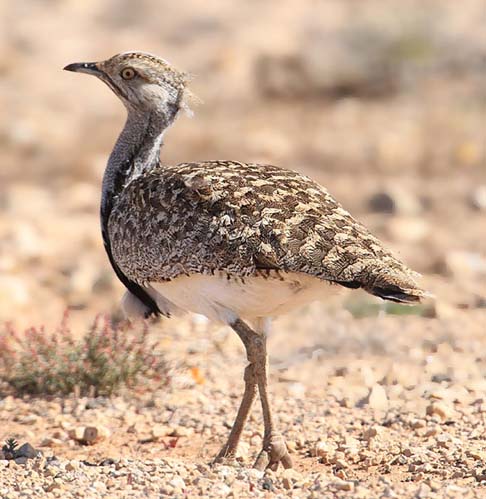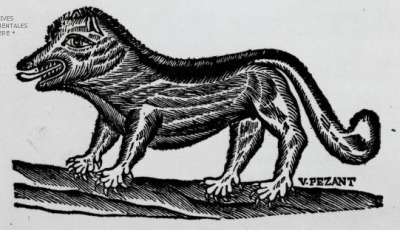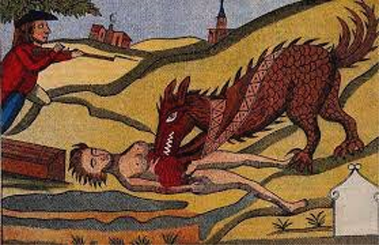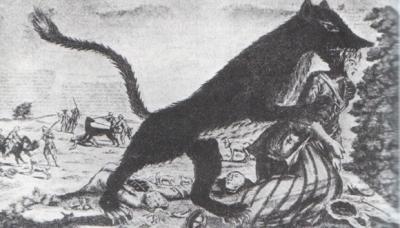After reading all about gnomes, elves, pixies, fairies and such like, it should come as no surprise to hear that Wollaton is not the only place around Nottingham to have played host to fairies in recent times. Marjorie Johnson, the lady who saw fairies in her garden in Carlton was to become very famous in fairy circles. She wrote this best selling book:
Here is a link to an account of fairies she saw in Nottingham, in Carlton to be more precise.
Belief in fairies persists still, even in our own time. When we went once to an isolated farm at Constantine in Cornwall, the farmer clearly believed that the huge ruined megalith in his bottom field was the home to fairy folk. He had seen their fairy lights on more than one occasion.
It is in Iceland that gnomes and fairies are taken most seriously. Over a half of Icelanders believe that these tiny entities are, at the very least, “possible”. They are thought to be from another dimension, usually making their homes inside huge boulders and outcrops of rock.
Known as huldufólk these beings are not regarded as trivial. Roads can be redirected on their behalf.
This report by Journeyman starts off in almost comic fashion, but does make some quite serious points:
This film by Torsten Scholl, aka “hatcast” has even more serious points to make:
This account by Richard Williams aka “rockuvages” is of the moment when the huldufólk seem to pop out of their own dimension:
Nowadays, we tend to see fairies and their like as something lovely and wonderful. This attitude has only come about since Peter Pan and Tinkerbell. Before that, fairies were considered by those who had regular contact with them to be malevolent beings who, if they were in any way annoyed, would readily kidnap adults, willingly do harm to them and, most of all, steal their babies, replacing them with changelings. This is why nowadays a lot of modern folklorists tend to equate ancient beliefs in fairies, with our current fondness for space aliens and little green men, who have continued in modern times to carry out all of these evil deeds:
Tales of fairies invariably involve abduction and poor innocent people forced to remain in Fairy Land, sometimes for ever. What difference is there between malevolent fairies holding people hostage in their realm and our modern tales of extra-terrestrial kidnap?
Other parallels are there. Some types of fairies, such as leprechauns and goblins, have green as their favourite colour, just as some aliens are literally “little green men”. Only medical experiments seem to be absent from the connections between the two groups, perhaps because in sixteenth and seventeenth century Ireland or Cornwall, there was no health care available and advanced medicine was not a subject on anybody’s mind. Only ointments and magic potions were on offer back then, and these simple remedies do figure from time to time in the more ancient tales of fairies.
Here is something more modern, a tractor beam, although some would argue that those fairy lights, leading innocent people out onto the marsh to drown or be abducted, did pretty much the same job:

This modern cartoon by “grackle” sums up best our ancient knowledge of fairies, who were by no means the magnanimous and well intentioned Peter Pan heroes of Walt Disney’s world.
Certainly, the Cornish and the Irish, for example, seem to view “piskies” or “the little people” as, at best, potentially tricky and at worst possibly, evil, and similar figures are met with in every human culture across the globe.
In North America, there are Ishigaq (Inuits), Jogahoh (Iroquois), Nimerigar (Shoshone) and the Yunwi Tsundi (Cherokee). In Hawaii, there are the Menehune, and for the Maoris, the Patupaiarehe. In Europe, there is a host of names such as the Brownies, the Kobolds in Germany, Goblins, Gremlins, Pixies, Leprechauns and the Swedish “Di sma undar jordi”, who are clearly almost identical with the huldufólk of Iceland:
Let’s finish with a quite extraordinary piece of film.
All over the world, of course, as well as “the little people” there are the enormously large people. In Nepal, the “yeti”, in North America, “Bigfoot”, in Western Europe “the Wildman” or “Wodewose”. In Iraq, he was represented by “Enkidu” the companion of Gilgamesh. In Israel, he was “Goliath” whom David slew:
In Australia, the enormously large person is called the “Yowie” and he is very fierce indeed.
The huge Yowie, though, has a tiny equivalent. To the white man he is “Brown Jack” but to the blackfella he is the “Junjudee”. He is tiny and here is a purported film of one:
Any film by TheRusty222 is well worth watching. He tries to film Yowies but most of all, he ventures deep into the realm of the thickest parts of the Australian bush, an environment of staggering beauty if you ever watch one of his films.
Talking of “Little People”, a few weeks ago, I bought a postcard of the High School taken in 1927. I was intrigued to see what is obviously the “School Leprechaun” busy guarding the front of the school:
You can see his right hand, his jacket of Irish Green, his little fawn breeches and his lovely top hat. Here he is, slightly enlarged:
Do you see his mutton chop whiskers? And what about little Pumpkin Head, next to him, with his tiny hat and his little legs and boots?
Both photographs, courtesy of the Pareidolia Brothers.


































































